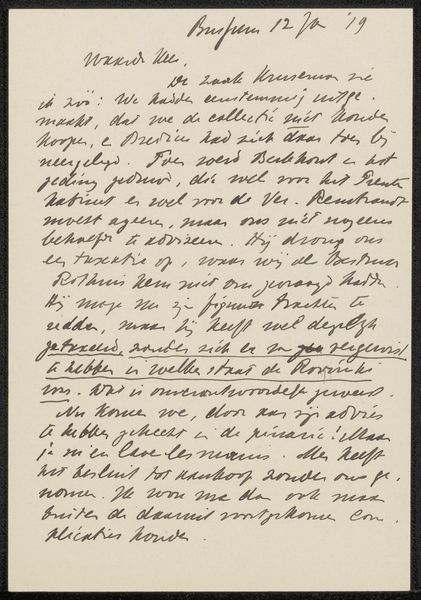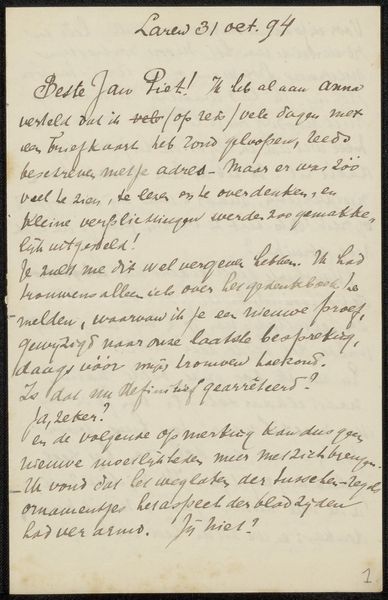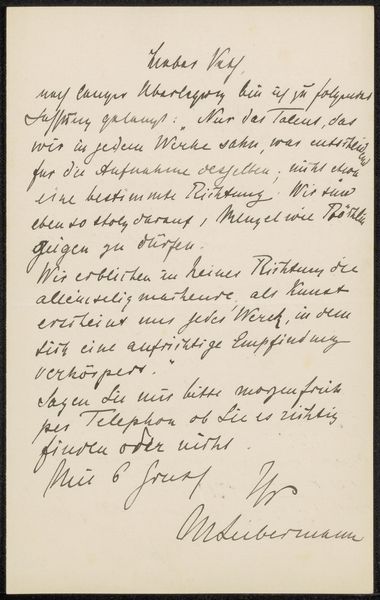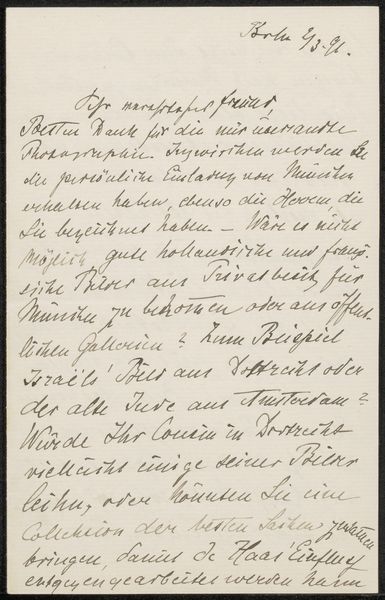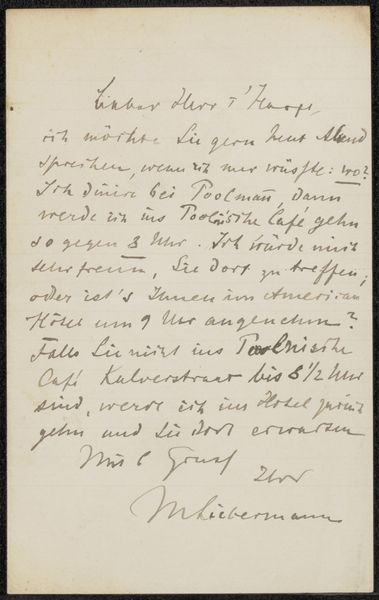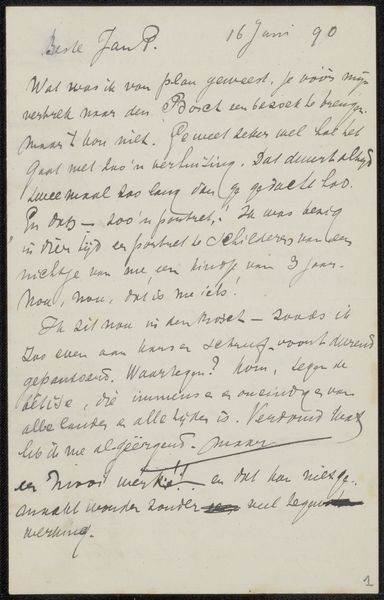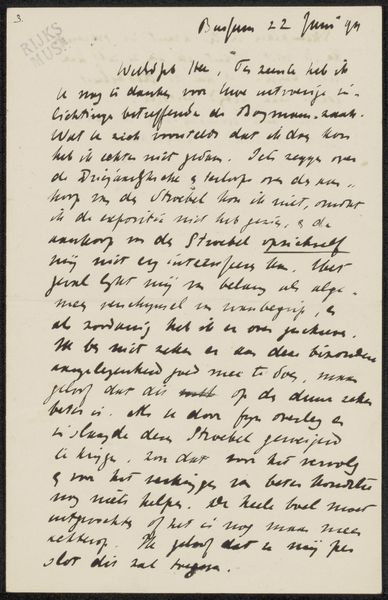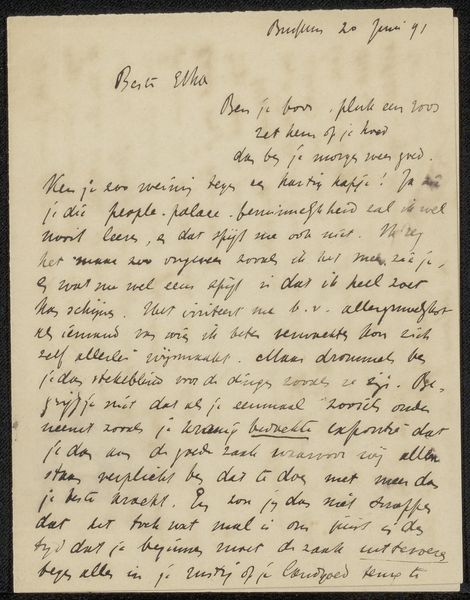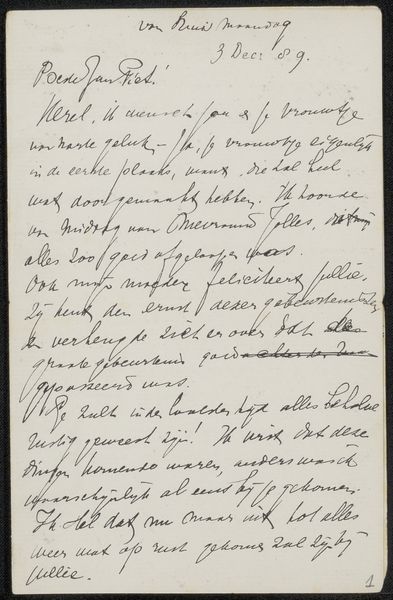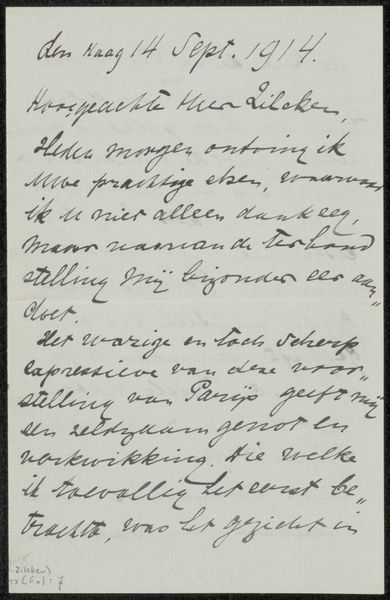
Copyright: Rijks Museum: Open Domain
Curator: This Max Liebermann pen and ink drawing, "Brief aan Jan Veth," made sometime between 1901 and 1910, intrigues me from a production standpoint. It is an informal material object but yet, an example of 'high art'. Editor: Yes, I agree, and I see how immediate the work feels. I'm struck by the quickness and the intimacy of handwriting, especially in contrast with, you know, printed text. What does that say, given its display as artwork? Curator: It forces us to reconsider the labor embedded in artistic communication. Before mass printing and certainly email, handwritten letters were a dominant means of exchange. The content here isn’t merely intellectual; it’s materially tied to the artist's hand, ink, and the specific qualities of the paper, which dictates, in a way, the final aesthetic. We must also account for how penmanship instruction varied in the period, adding another layer to the production of this form. Editor: So, the aesthetic quality of the handwriting *is* part of the work and relates to its purpose, that's an important consideration! But doesn't that diminish from its reception and intent? It could easily be a grocery list, right? Curator: Perhaps. However, its survival within the Rijksmuseum suggests that it is regarded, beyond its content, as having artistic merit, even as we consider the evolution of 'art' in culture. Editor: Okay, I am seeing it now. Examining everyday processes offers more insight into historical context and how the work gained significance, it has helped me look beyond the surface. Curator: Indeed. Considering the materiality can often lead to unexpected perspectives.
Comments
No comments
Be the first to comment and join the conversation on the ultimate creative platform.
